Earlier last year we were in Corsica again, this time staying in St-Florent. Our house was on the edge of the town, with a view eastward across a field to the ancient cathedral and the hills and mountains beyond. This was the heart of the Roman town, before the Genoese new town developed on the coast.
Before there was St-Florent, there was the Roman/early medieval town of Cersanum (or Nebium, as it was called after the 9th century), its centre marked by the elegant Pisan Romanesque cathedral of the Nebbio, Santa Maria Assunta.
Dana Facaros & Michael Pauls: Corsica
Sitting with my feet in the pool and looking at the cathedral.
The most exciting aspect of Saint-Florent is the Cathedral of the Nebbio, approached by an unpromising narrow road leading out of the main part of the village for 1km and then, suddenly, to the left of the road on a slight rise, is the church of Santa Maria Assunta, the Cathedral of the Nebbio, starkly beautiful on its sward of rough grass, with a farmyard to one side and vineyards stretching below, its honey-coloured walls expertly restored in the 1980s.
Standing before the cathedral, waiting for the doors to be opened, and looking back down the field to our little stone cottage. And all the while being watched by the hornets in the hollow tree beside me.
And around the back, there were similar comings and goings high up in the wall of the apse.
The Cathedral of Santa Maria Assunta was built by the Pisans in the first quarter of the 12C as was La Canonica, the former cathedral of the diocese of Mariana close to Bastia, which it resembles. These two cathedrals are outstanding examples of Romanesque architecture in Corsica. Built of fine-grained pale limestone, the Nebbio cathedral’s west front is elegant and dignified with semi-circular blind arcades arranged in two tiers, five rising from ground level and the three top ones reaching almost to the pitch of the roof, leaving room in the small triangle at the top for a slender Greek cross. The lintel and pillars are decorated at intervals in relief resembling shells engraved with concentric lines. The decorated capitals of the graceful pilasters show, on the left, a four-legged creature in high relief and, on the right, a pair of intertwined snakes. The beast is lion-like with mane and long tail and yet, the closer one looks, it becomes apparent that the animal is more fantastic than leonine. The cathedral had at one time a campanile, demolished in the 19C.
Enter the church by the door in the south wall. Inside, a nave and two aisles divided by pillars whose capitals are decorated with shells, foliage, fabulous animals and serpents, a ram, and abstract designs… To the right of the main entrance door is a glass case in which are exhibited the mummified remains of St Flor taken from the Roman catacombs and sent to the Bishop of the Nebbio by Pope Clement XIV in 1771. In size and height the body would seem to be that of a youth of 14-18 years old, possibly of North African origin, dressed in the 18C conception of a Roman soldier’s outfit: a highly unsuitable kind of battle-dress made mostly of fine chain mail. There is something most touching about this small figure, dressed as it were by the theatre wardrobe.
In the 5th century, the Vandals, who were die-hard Arians in the raging controversy over the true substance of Christ, took as much pleasure out of persecuting orthodox Christians as vice versa, and when the Byzantines took Corsica and sent the Vandals packing to North Africa, the Vandal king Huneric exiled every non-Arian bishop he could find to Corsica. One was Florent, who then served as bishop of Nebium. His relics were taken to Treviso in the early Middle Ages, and in 1770 the Bishop of Nebbio, regretting the lack of local relics, asked the pope if there weren’t perhaps some holy bones he could spare. Clement XIV duly sent over a skeleton of a 3rd-century martyr found in Rome’s catacombs (one could tell he was a martyr by the accompanying vial of blood); the bishop built up some features in wax, and dressed the body as a Roman soldier, and baptized him ‘St-Flor’ to fit the name of the town; he now rests in a glass casket by the door. Every three years (2006, 2009, et seq), on Pentecost Monday his relics are taken down to town in a procession. The bishopric of the Nebbio was suppressed in 1790, which put an end to a curious custom: as the bishop also held the title of count, he was allowed to wear a sword and say Mass with two pistols on the altar.
Dana Facaros & Michael Pauls: Corsica
Further down the lane, in a field behind the cathedral, we found two curious rows of parallel stone columns. They looked ancient, and significant like hand-built menhirs. Did they align with the rising sun? I had no idea so I sent a request for more information via Twitter. My favourite answer was from Ann Gate – Odysseus had them set up to shoot two arrows through, to make doubly sure of suitors.
I told her I liked the sound of that… Whizzz ⏩ came back her instant reply.
More reliable information followed from LetsTalkAboutCorsica. It seems these columns must once have formed a pergola, a green arbour through which to approach the now no more Bishop’s Palace.
Over the road we discovered an ancient mausoleum, vestigial remains of a once larger settlement.
Higher up the valley we stopped to look at the hollow remains of an abandoned church. It commands a fine view back down to the Gulf of St Florent, and must once have been built with great love and dedication, to serve a local community which now no longer exists. It stands isolated with fields all around, roofless and returning to the landscape, a picturesque reminder of nature’s eternal return.
The view back down the Poggio valley to St-Florent and the Désert des Agriates beyond.
The road continues behind the church, climbing steeply to Oletta where we had lunch on a terrace overlooking the Alisu valley. From here we headed north along the winding D38 with spectacular panoramas of the Golfe de St-Florent and the wider Nebbio all the way down to the sea. The peaks in the middle distance are the ones I drew earlier from our pool, only now viewed from the other side.
The road led us through the Col de Teghime and then via steep twists and turns to Patrimonio.
At the foot of the Col de Teghime and the Sierra di Pigno, this village in the heart of the Nebbio region is one of the main wine-producing centres on the island. The vineyards, which all belong to small, family-owned wineries, dot the limestone hills that dominate Patrimonio…
Overlooking the village is the church of St-Martin, built in 1570 and reached by a stairway. At sunset, its facade takes on golden hues. Just down the lane, next to the church, is a megalithic menhir with a carved face.
Patrimonio… gives its name to the first wine in Corsica to be designated ‘appelation controlée’. Set on a hillock, apart from the village and surrounded by vineyards the church of St Martin (16C, restored and belltower added early 19C), its warm brown stone and fine proportions most imposing from a distance. Interior has a painted ceiling and finely worked marble altar. In a garden near the church the statue-menhir U Nativu (900-800 BC), of limestone with a T engraved on the sternum and the lower ribs indicated. It was found in 1964 during excavation for vine-planting in the nearby commune of Barbaggio.
Blue Guide Corsica: Roland Gant
Just up the Bastia road, rolling limestone hills covered with vines announce Patrimonio, the heart of the oldest AOC wine-growing area on Corsica, reputed for its reds, muscats and white ‘vermentinos’ – considered some of the finest in the Mediterranean, partly due (or so they say) to the wind that keeps the soil dry. Overlooking sheltered St-Florent bay, Patrimonio enjoys a sunny microclimate in an amphitheatre that Paoli dubbed the Conca d’Oro (the ‘golden shell’) after the fertile Conca d’Oro just east of Palermo.
Patrimonio’s photogenic church on a hill, St-Martin, dates from the 16th century and has little to see within, although a shelter below the church houses the striking statue-menhir U Nativu (c. 800 BC), 7ft 6in/2.25m tall and the only one on Corsica made of limestone rather than granite. Discovered in 1964 by a farmer at a place called Nativu, it has prominent ears, eyebrows, chin and an open mouth as if it were howling; an inverted T on the chest could be a stylized breastbone.
Corsica: Dana Facaros & Michael Pauls
Below the church, by a patch of open ground dotted with bright blue puddles, that may or may not have been copper sulphate, stood an up-ended wooden pallet with a hastily scrawled chalk notice.
DEFENSE D’ENTRER
SOUS PAINE DE MORT
And watched over by the magnificent 3,000 year old sentinel figure of U Nativu.
※
From here it was a short drive down to the coast and back to St-Florent.



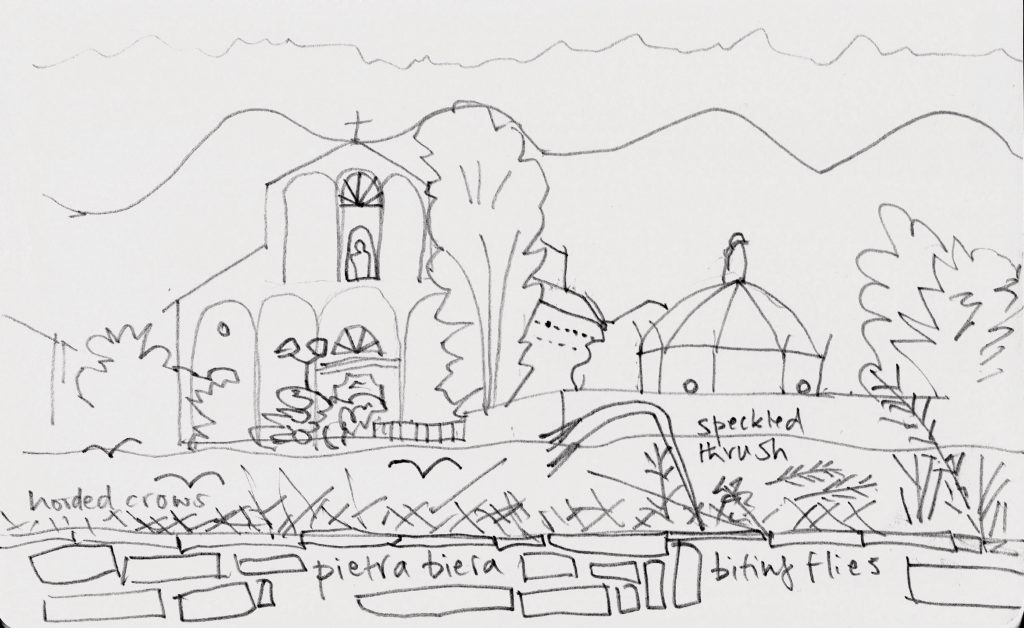
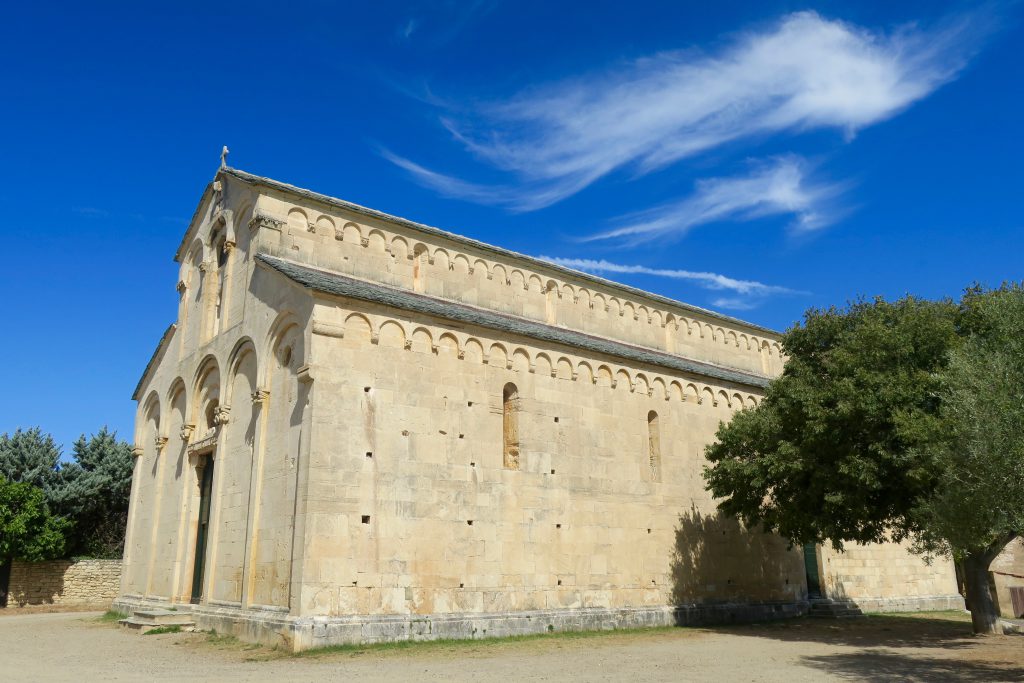
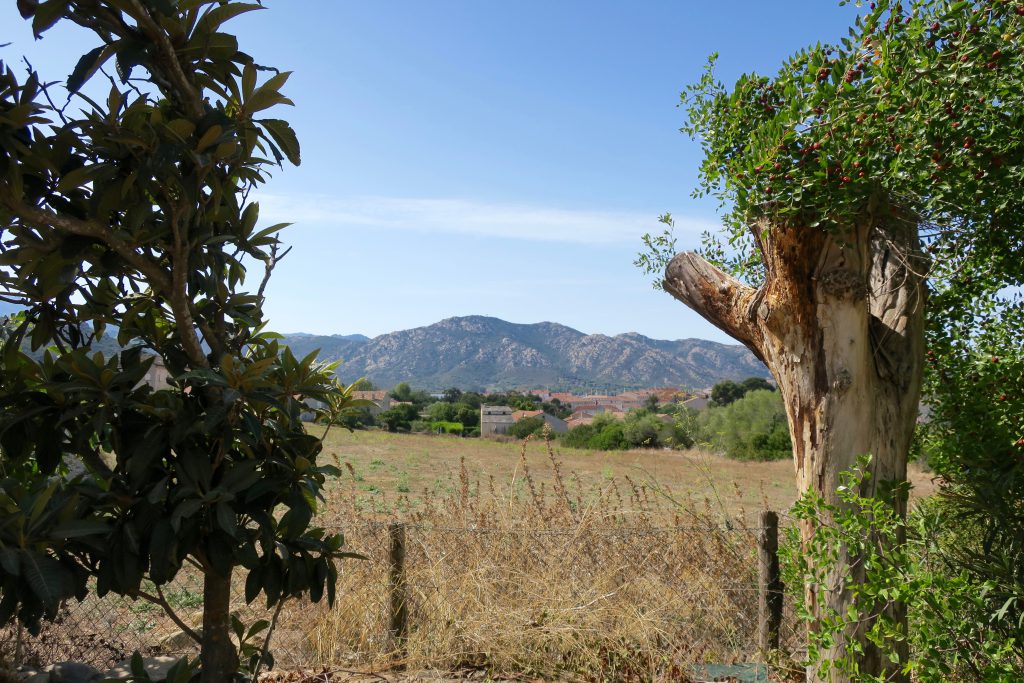
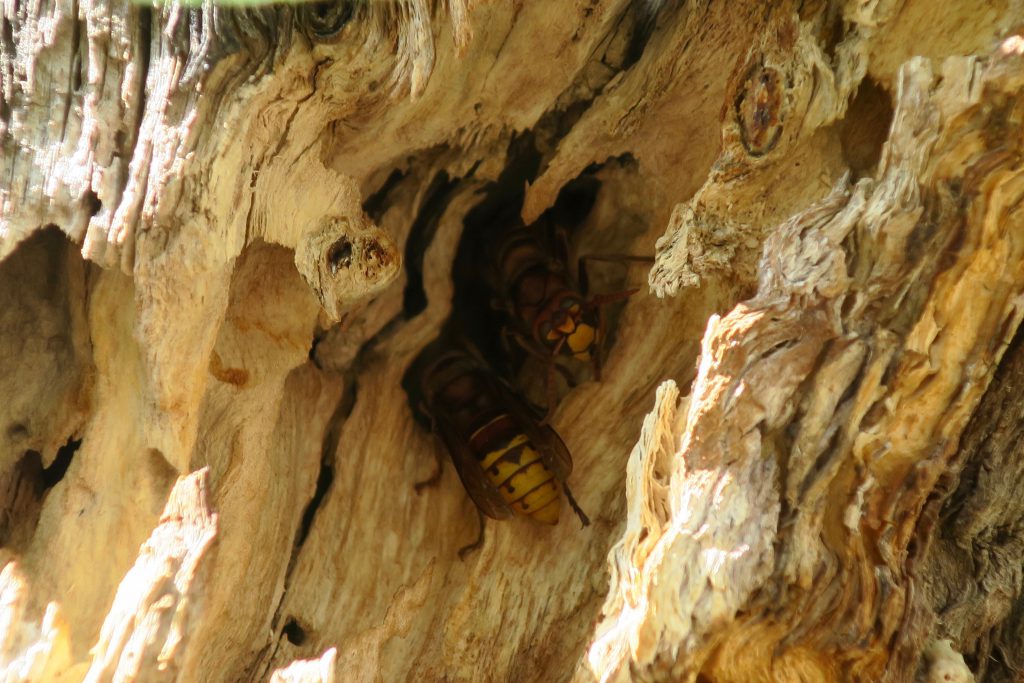
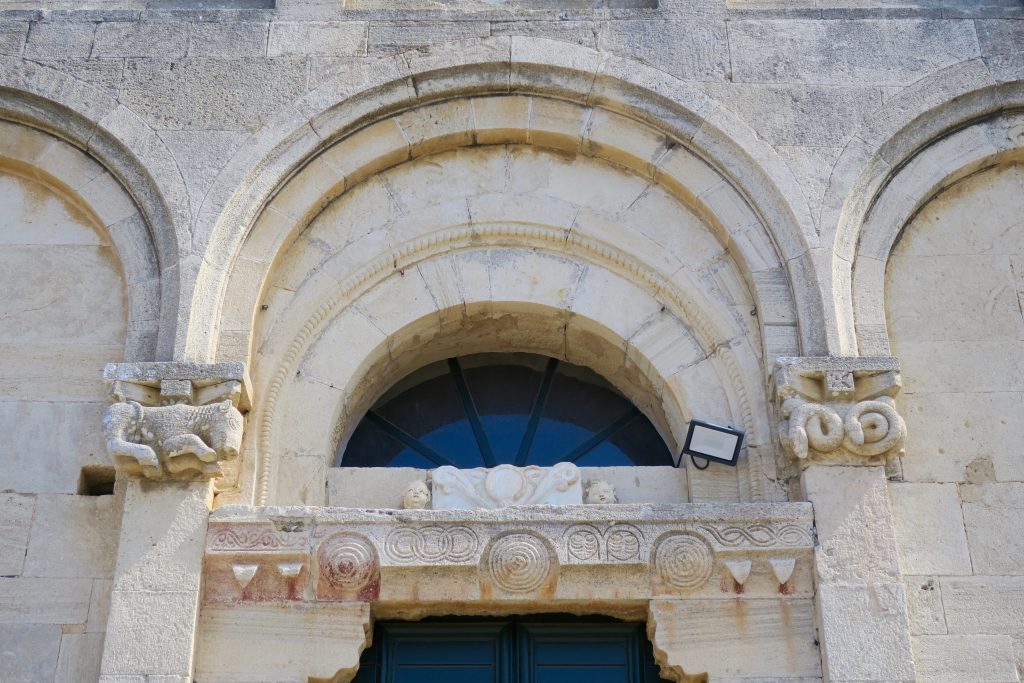
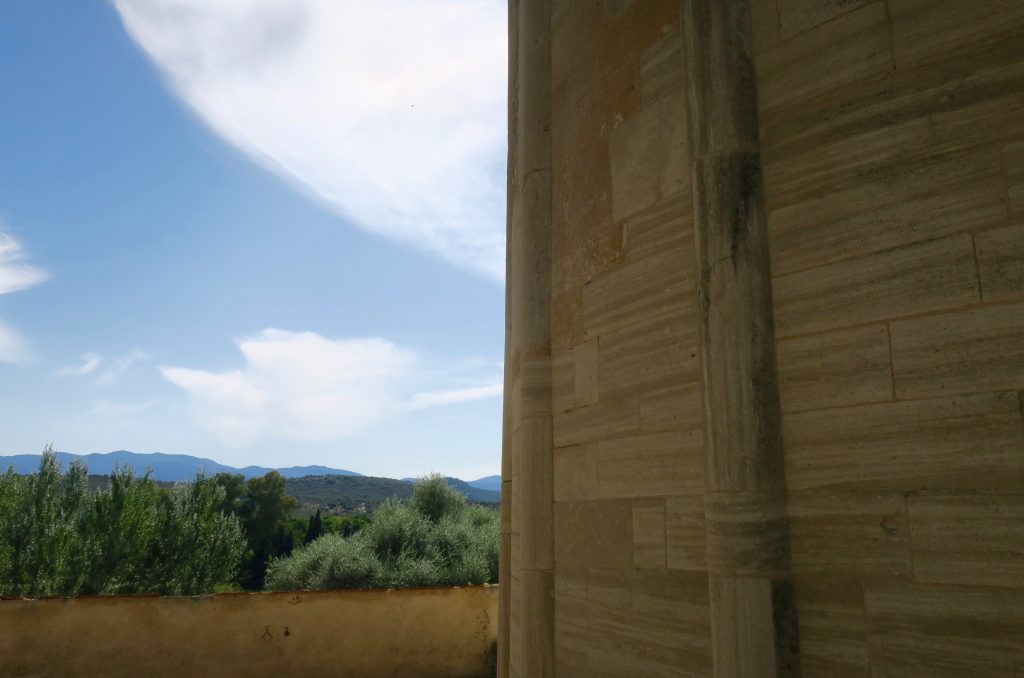
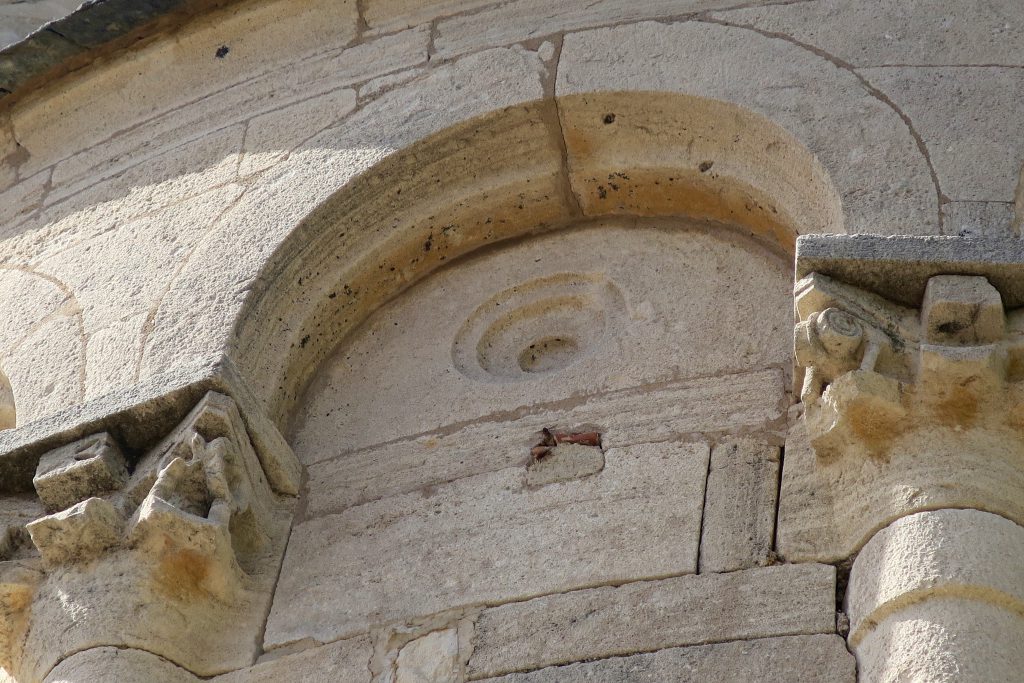
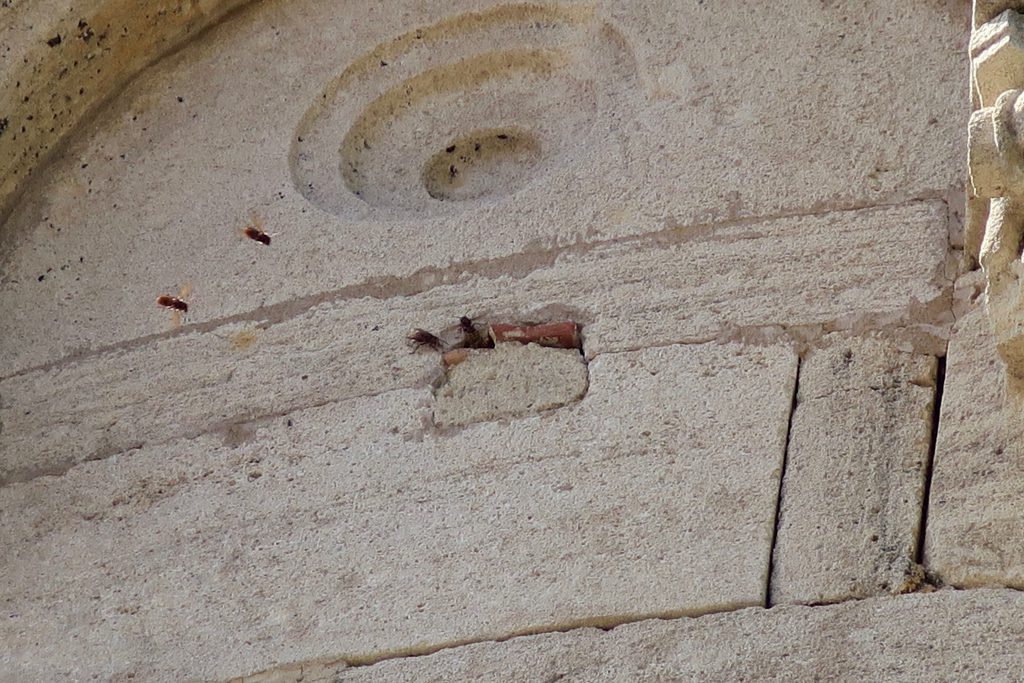
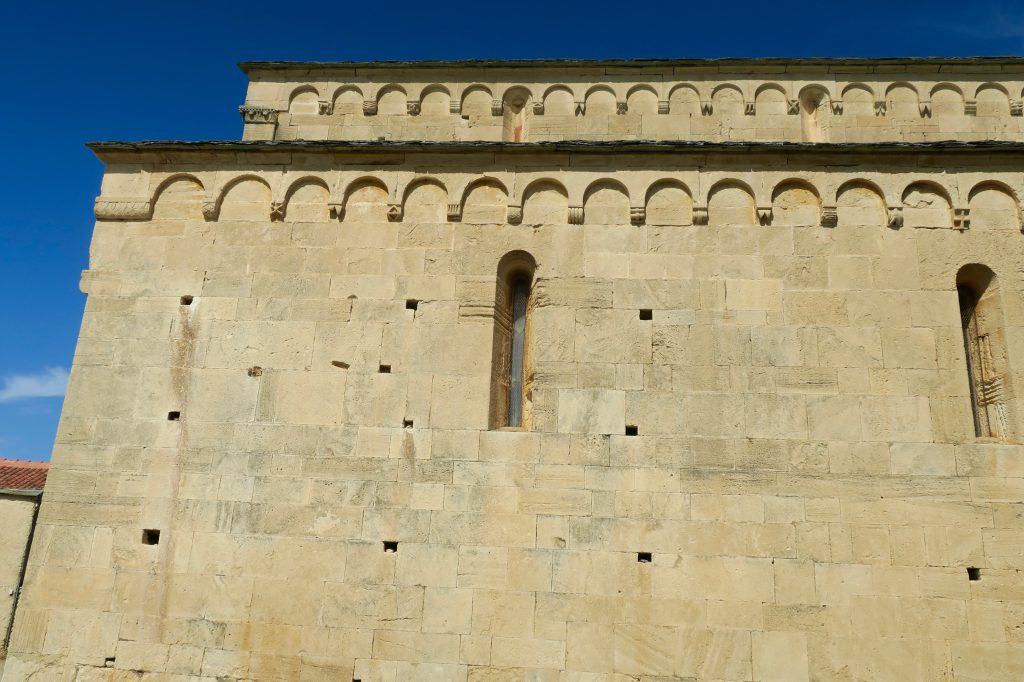

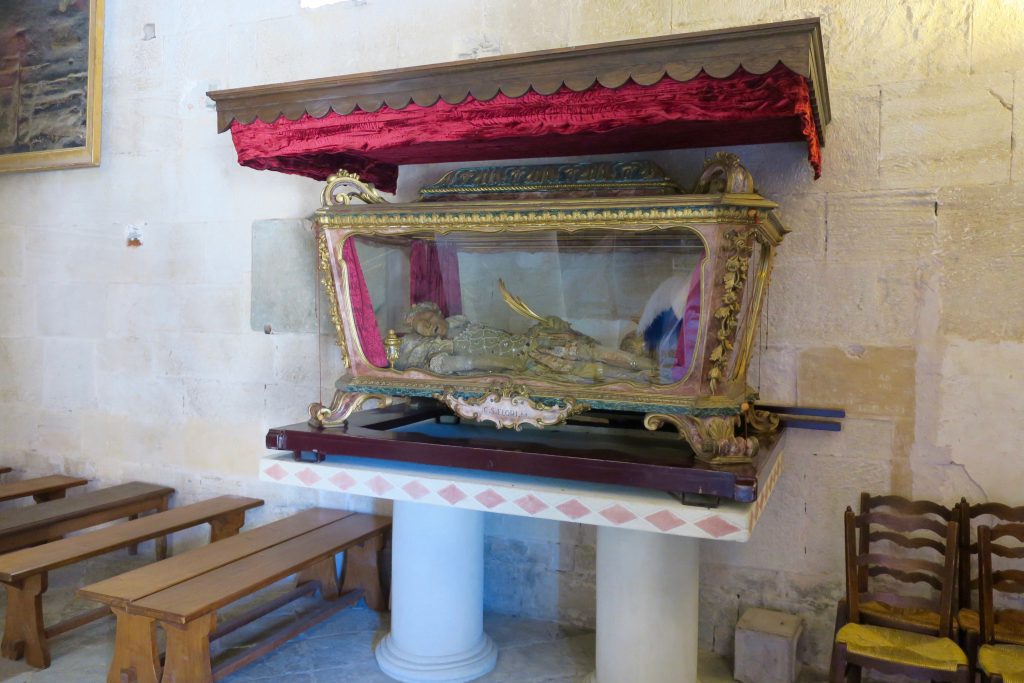
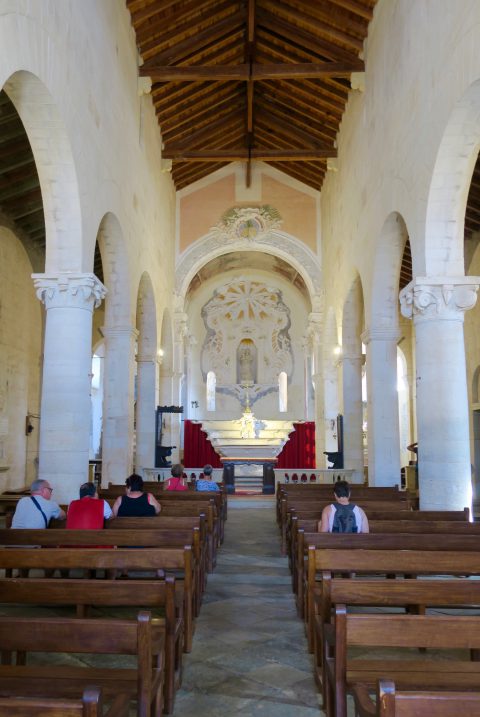
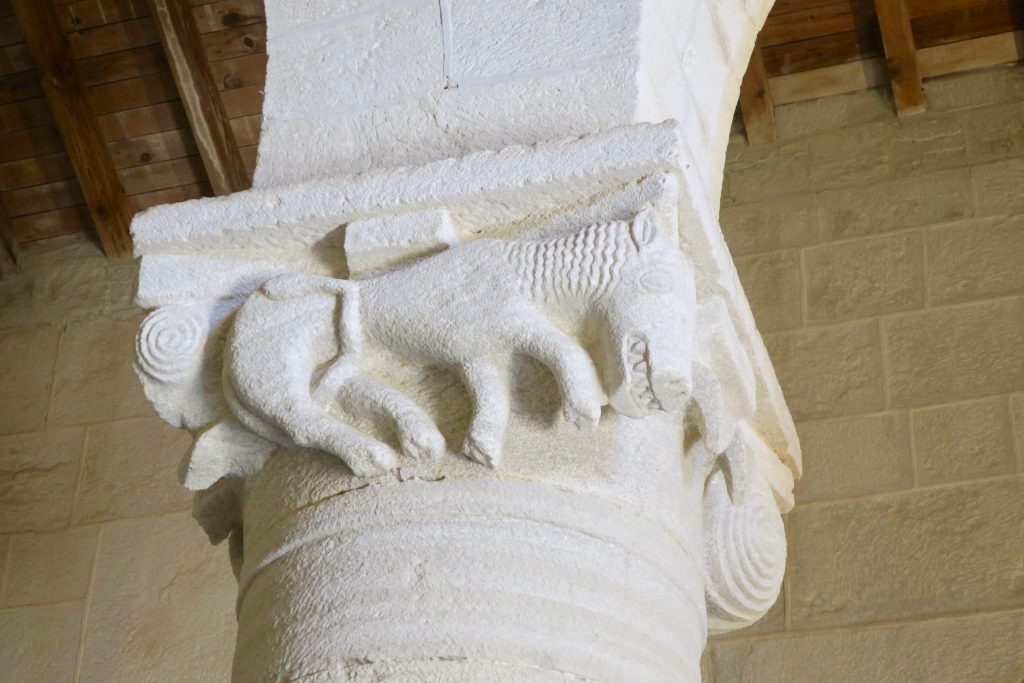
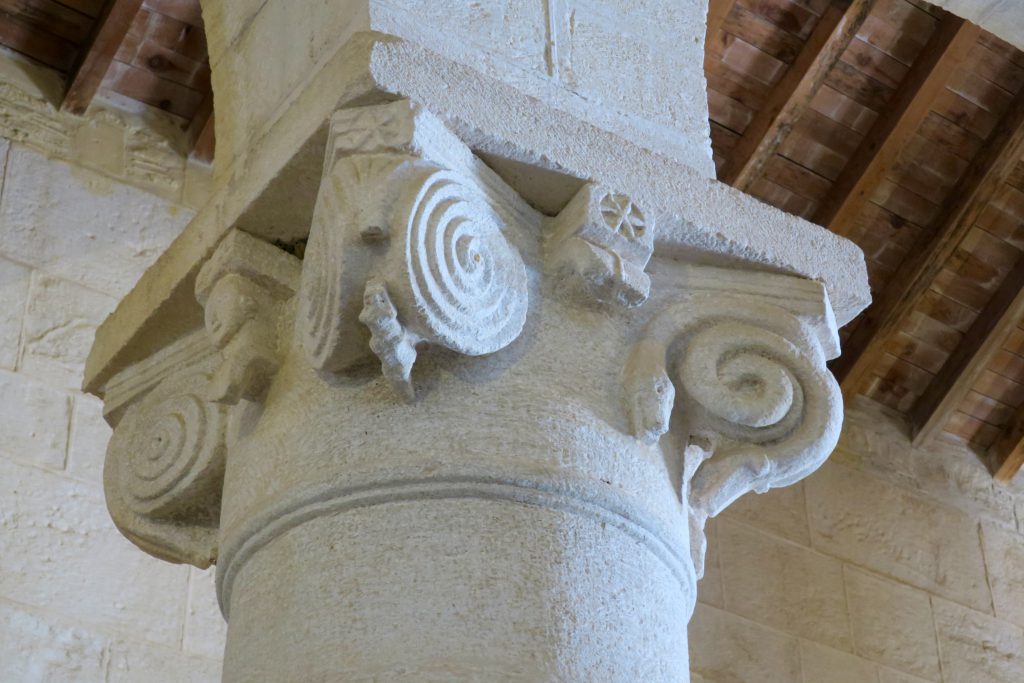
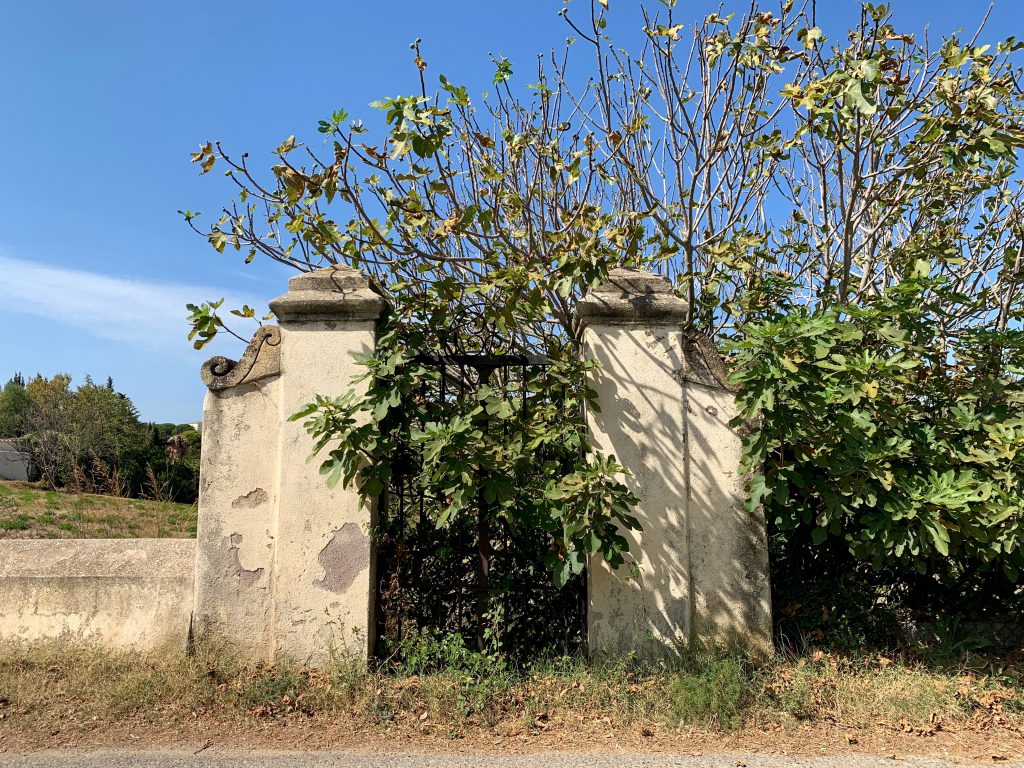
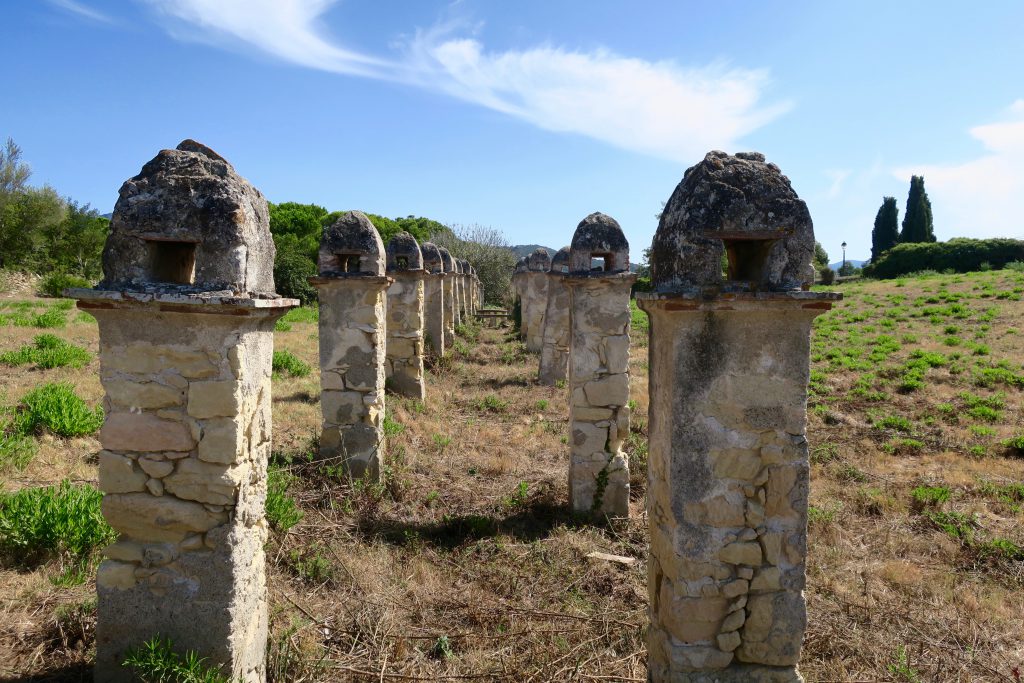

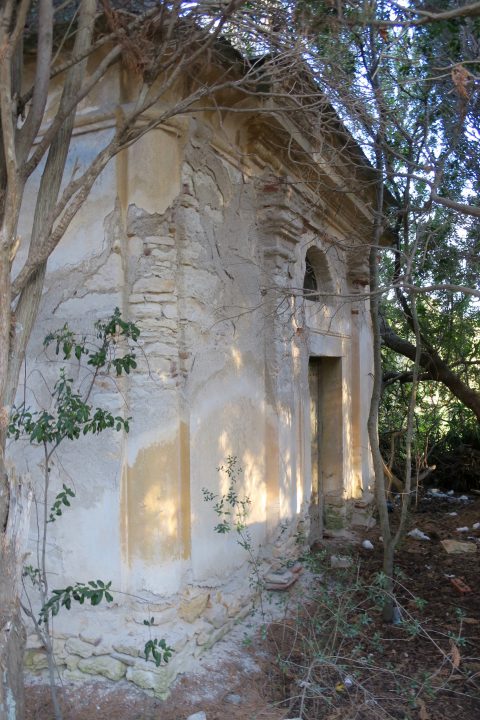
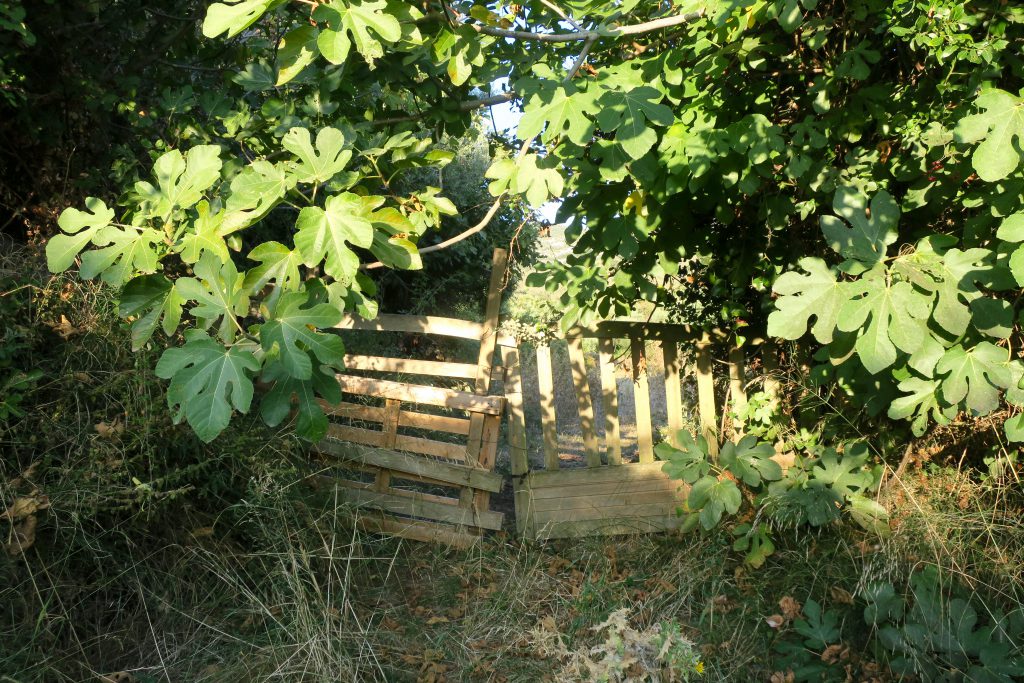

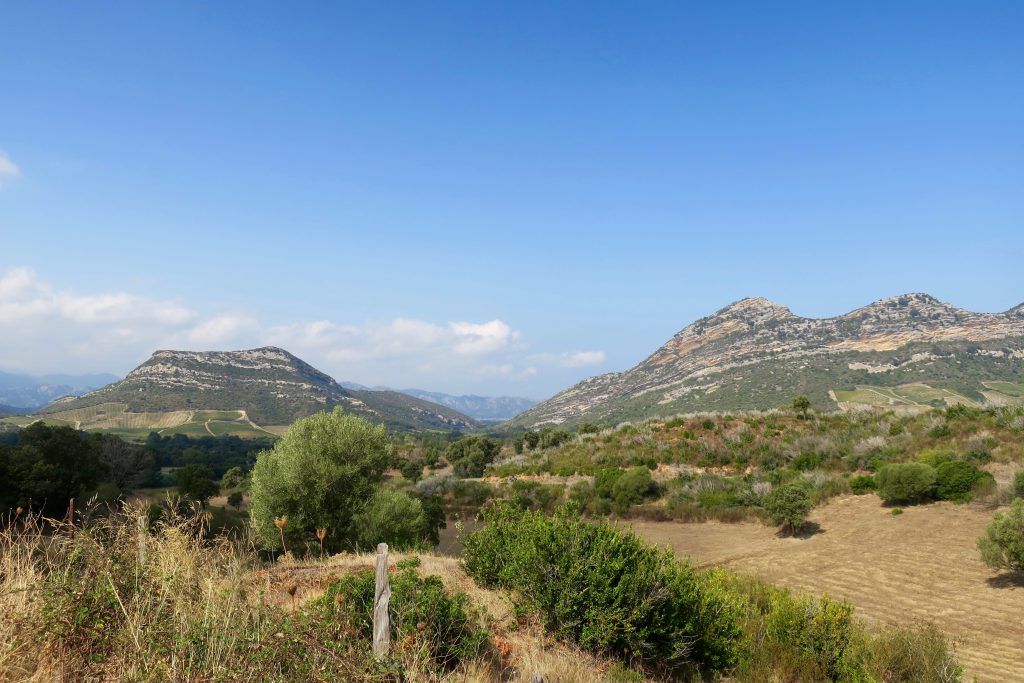
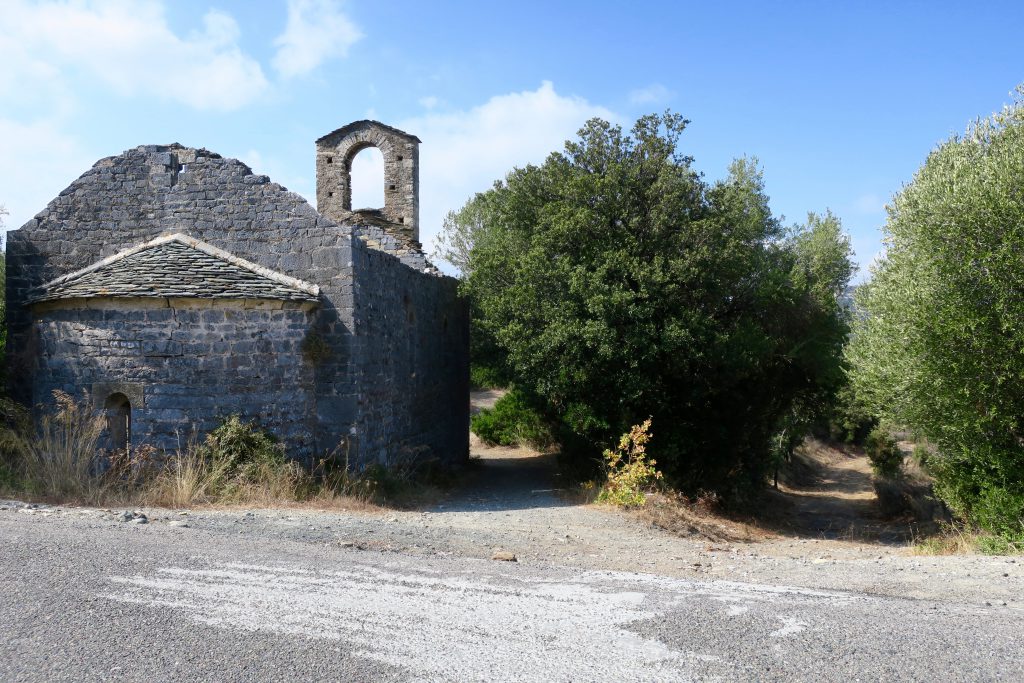
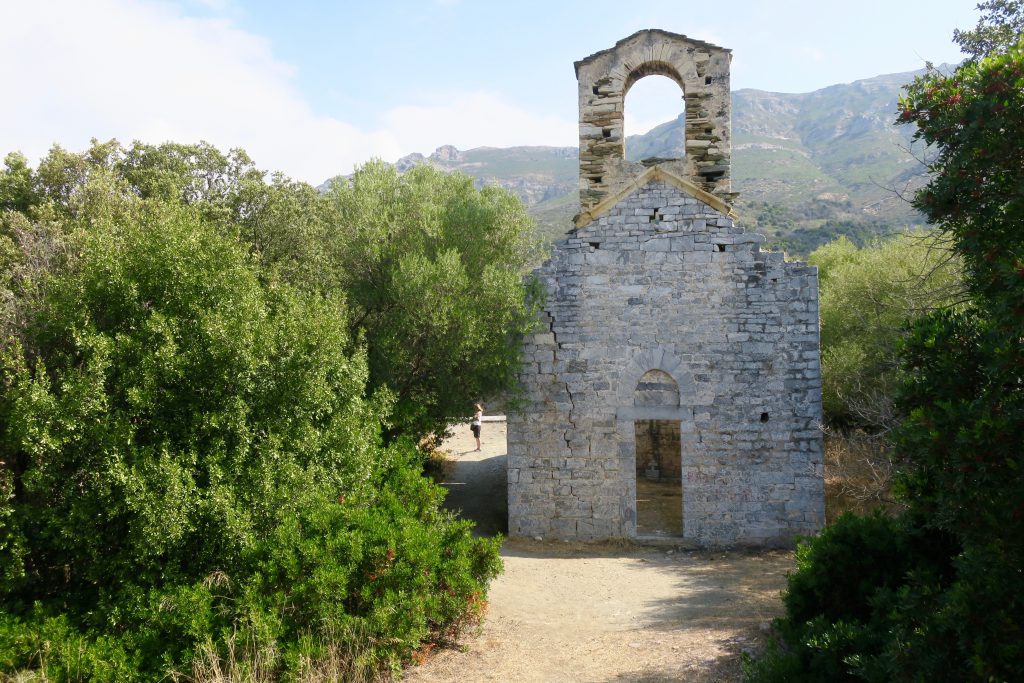
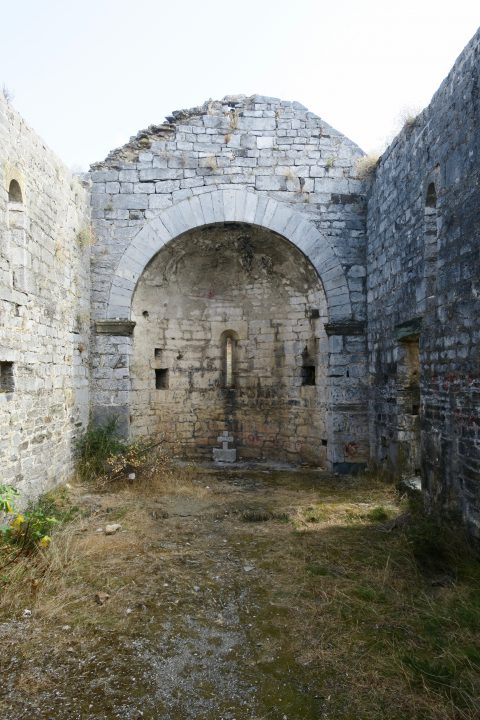
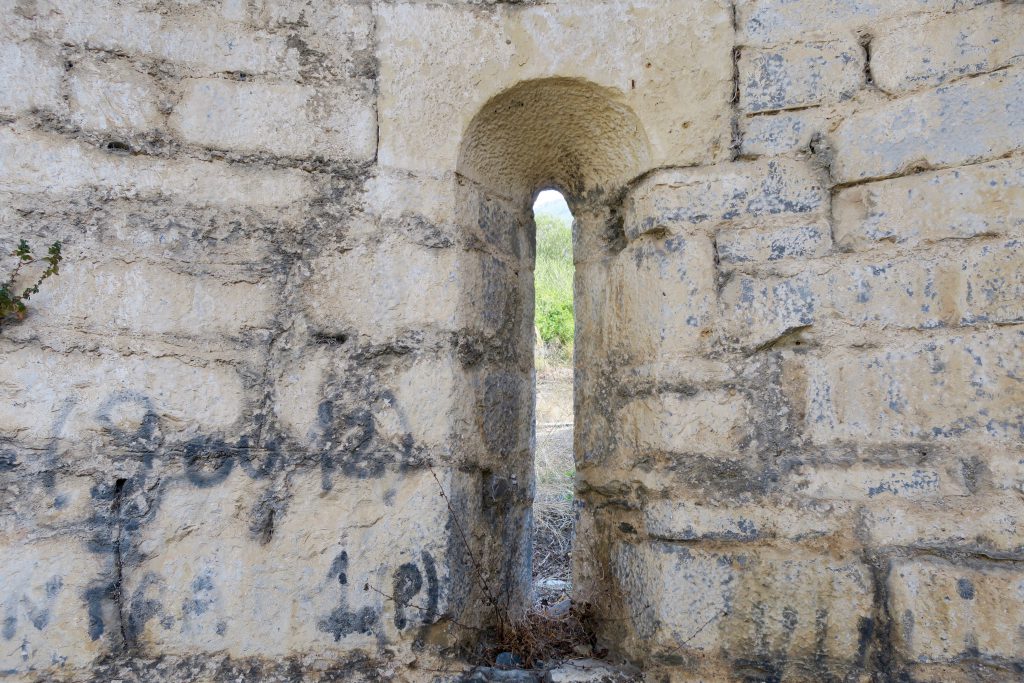
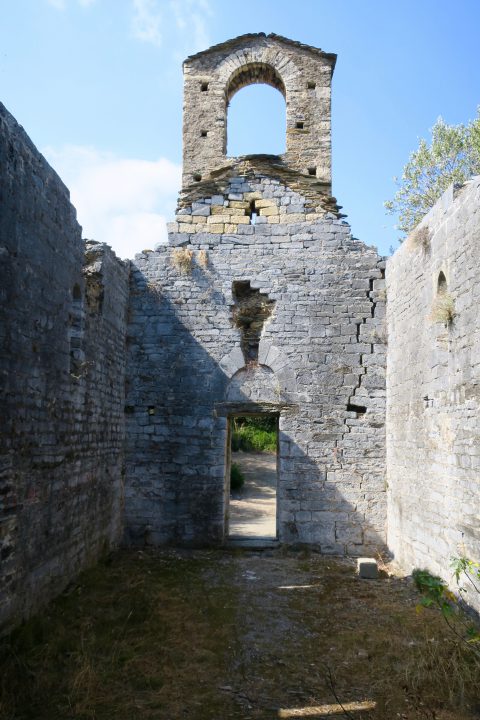
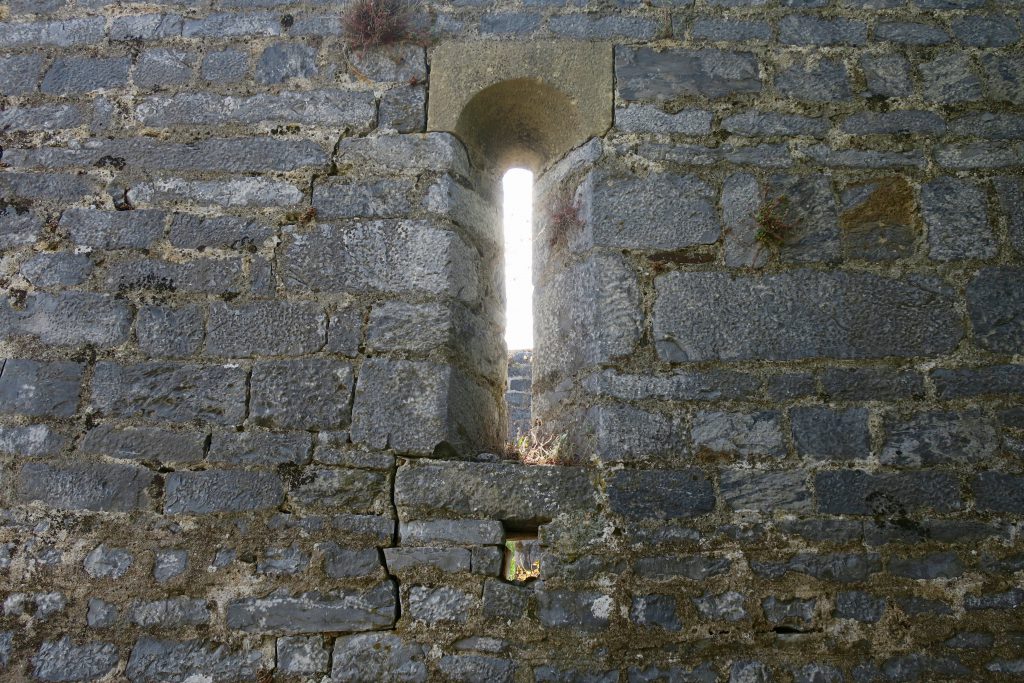
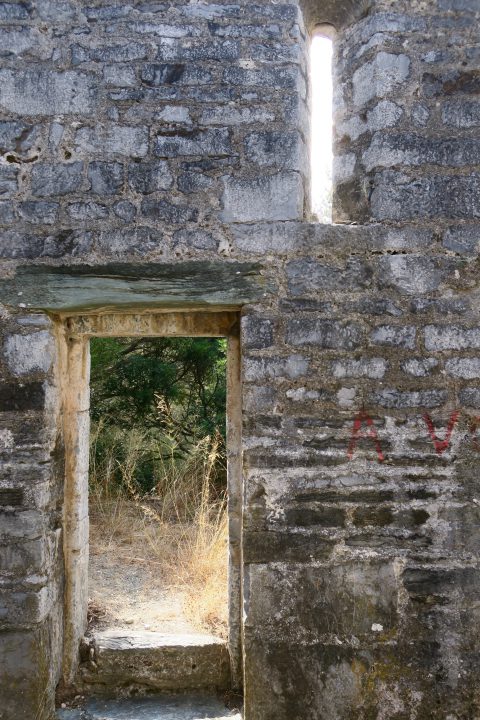
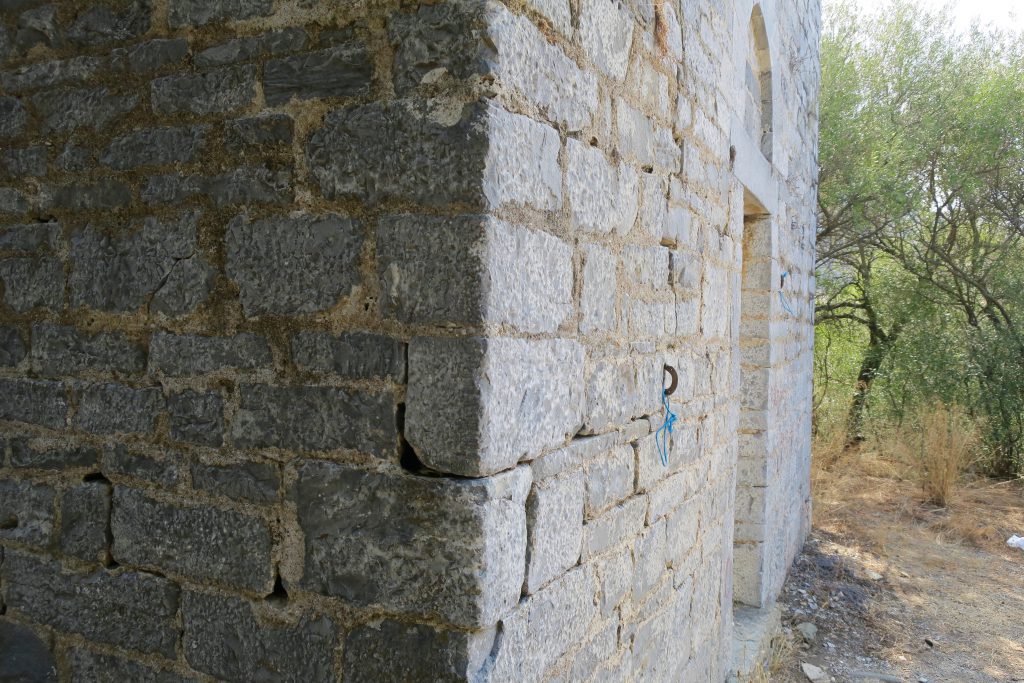
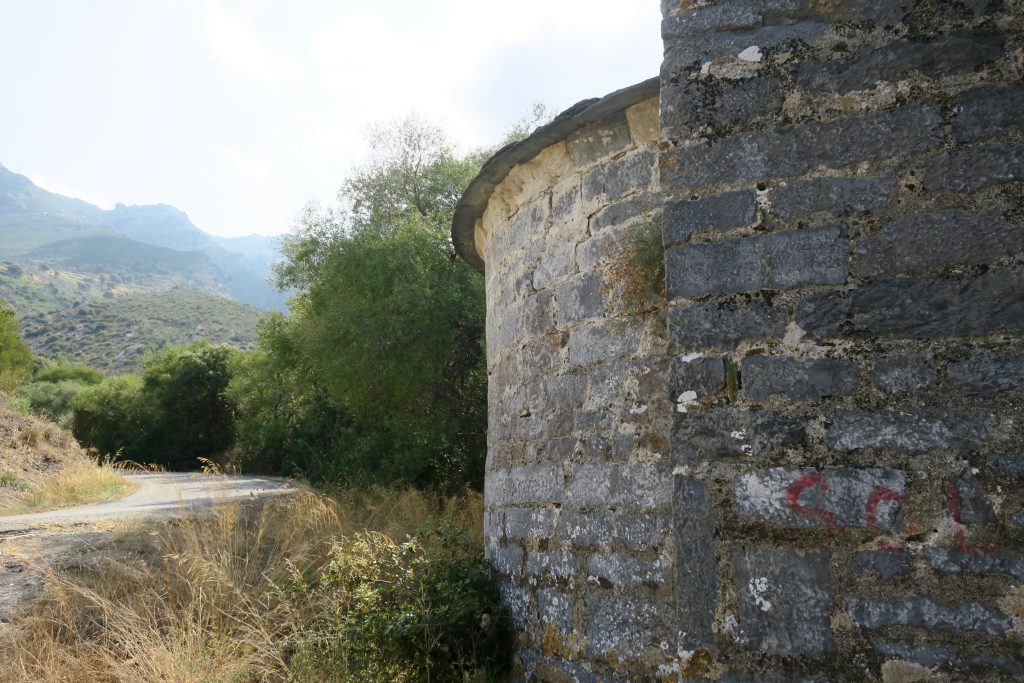
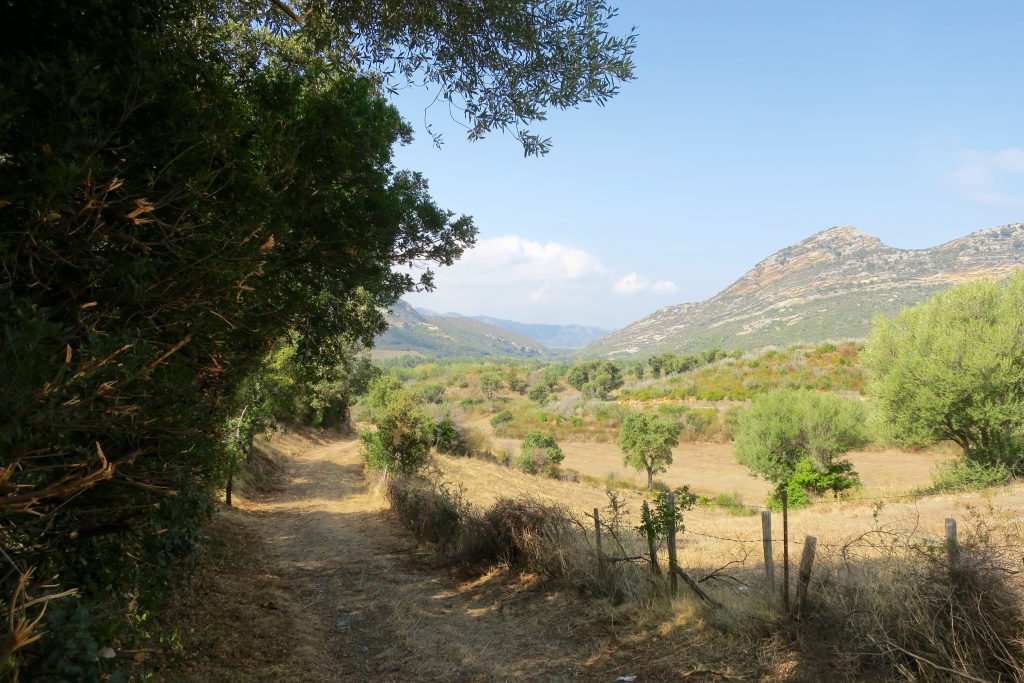





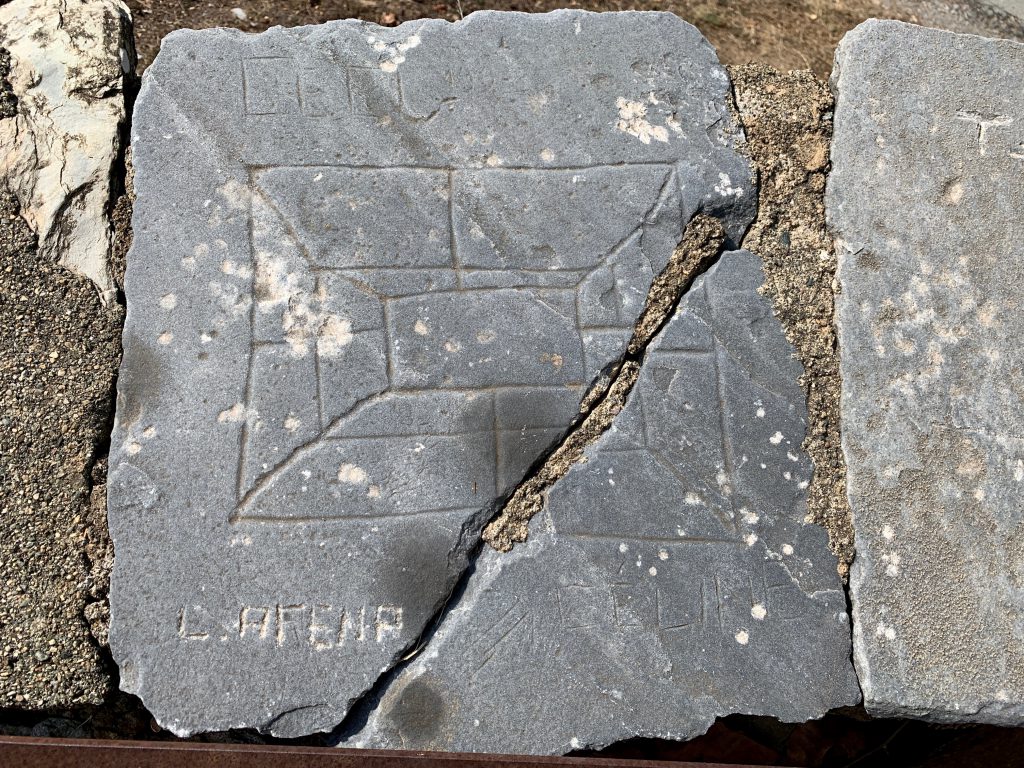
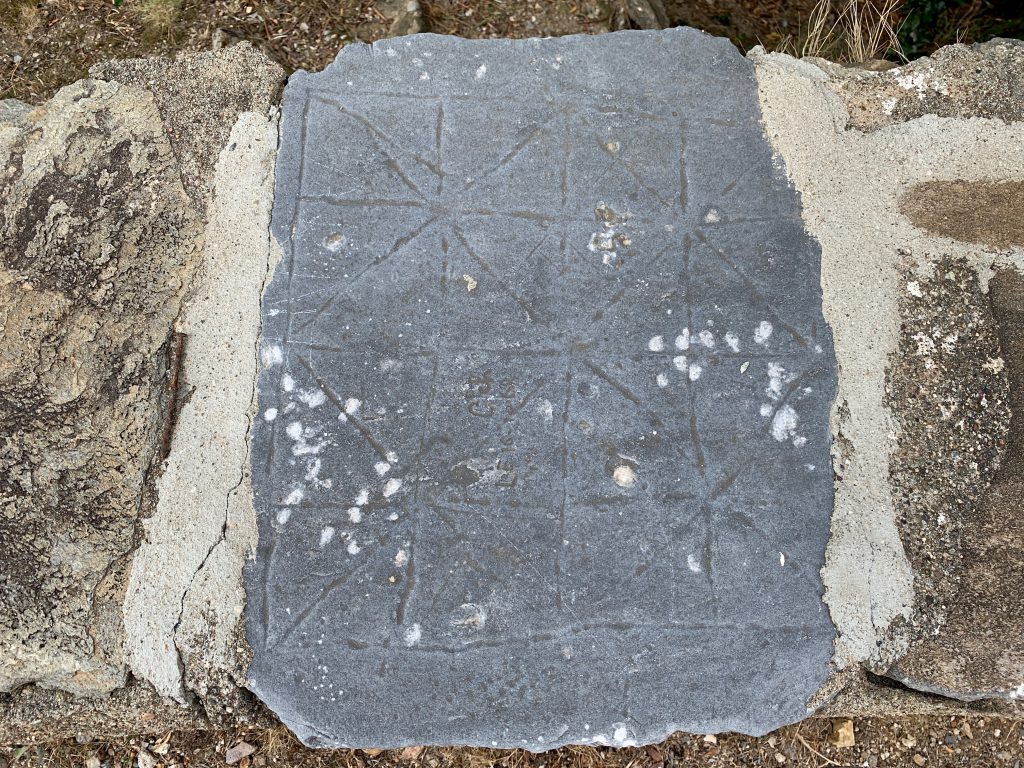
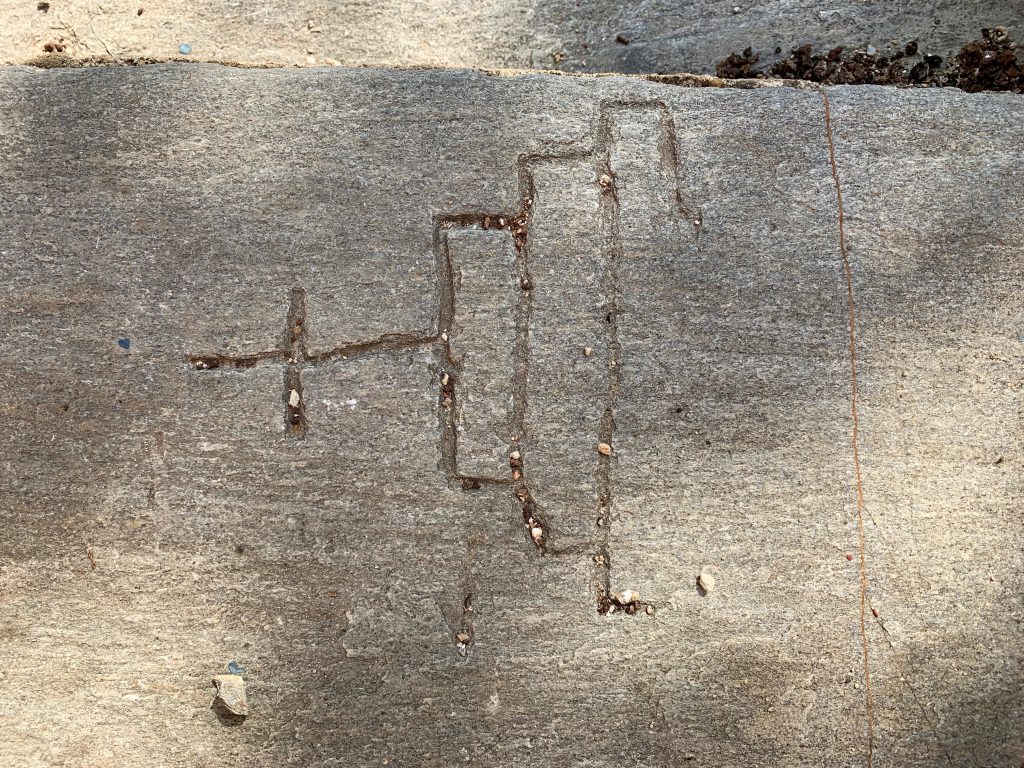
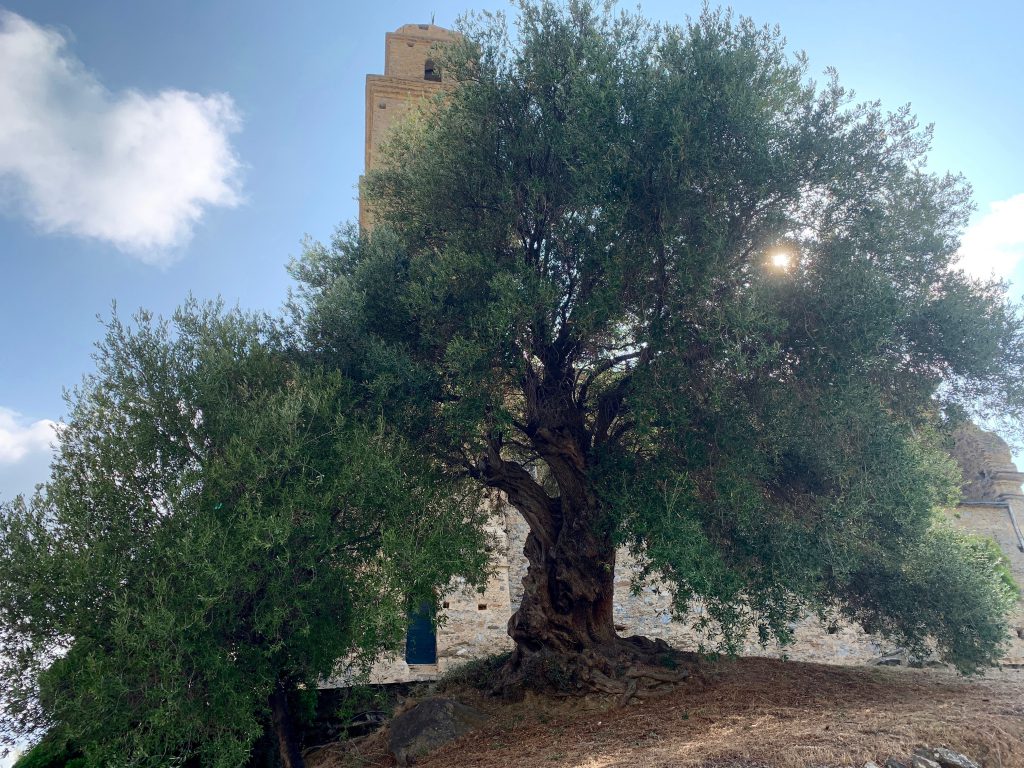
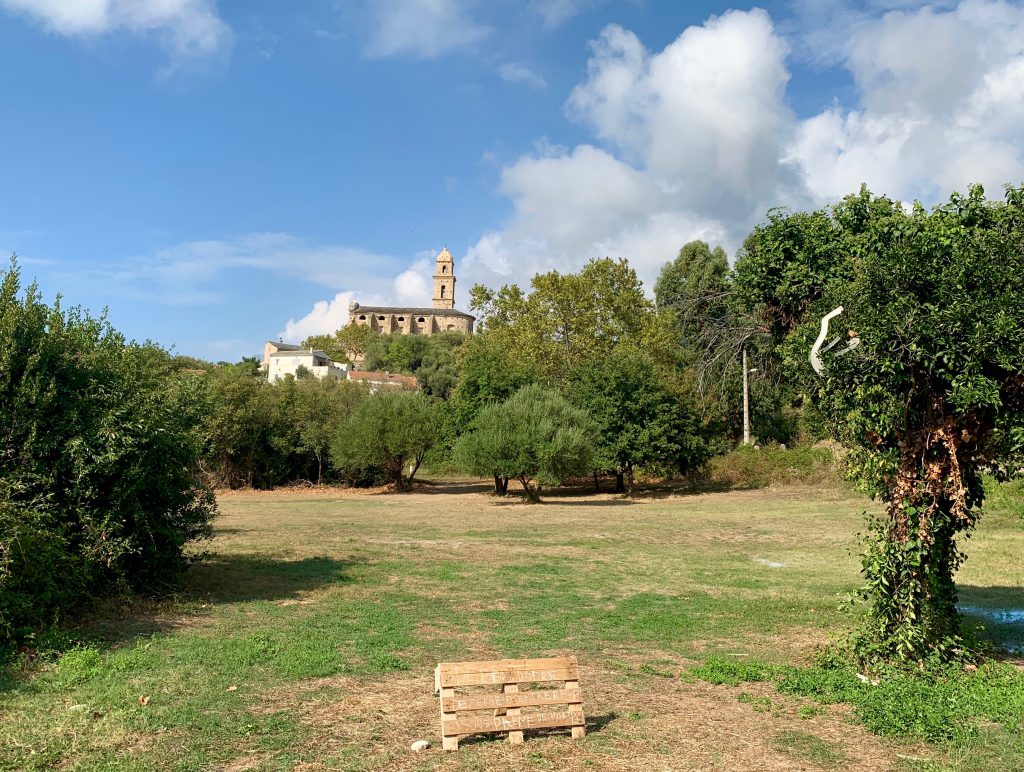
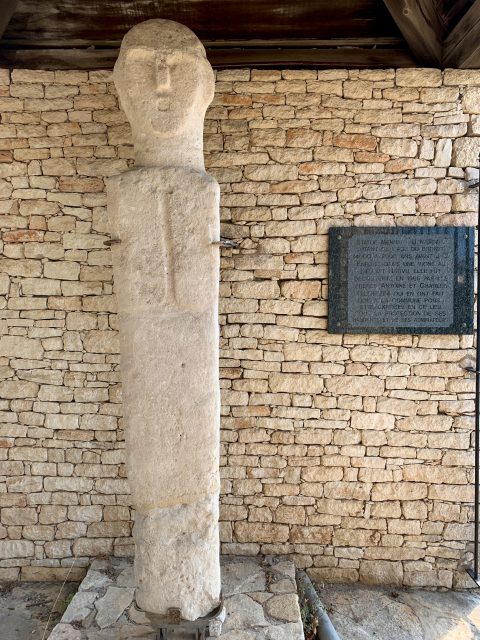
wonderful trip to the sun from London in January. Thanks, Isobel Johnstone
The first photograph through the window could be a watercolour on a piece of irregular shaped paper. Its lovely